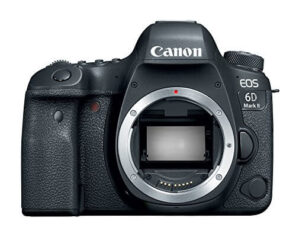Understanding focus in photography
Last update: 04/19/2024
Our blog continues to grow thanks to you, our readers. This post may contain affiliate links, which means we can earn a small commission if you make a purchase through them, at no extra cost to you. This helps us to continue to bring you more and support our work!
After discussing the exposure in photography and the three parameters characterizing it, let’s dive deeper! To continue with the basics, we’re going to talk today about focus in photography. If you’ve never heard this term, you still use it every day when taking pictures. Remember, focus is when you press your shutter button halfway down to take a picture. You see? It allows you to control your depth of field.
This article explains everything you have to know about focusing: what is it for exactly, how does it work, what are the different types, different modes, or the “focus-recompose” technique?
After all of that, you won’t be able to go wrong with focusing! (Well, it still happens to me actually…).

Focusing in photography: how does it work?
Let’s start with the basics. Focus is simply what you do when trying to bring a detail or subject into focus. I wrongly said in the introduction that it’s when you press the shutter button halfway down. There are actually two types of focus on digital cameras: manual focus and autofocus.
The goal here is not to write a detailed article on manual focus because frankly speaking, it would be of little interest. The technique is that simple: you just have to turn the focusing ring of your camera and look through the viewfinder. When you judge that the scene you want to photograph is in focus, then you shoot.
This article will focus on autofocus. This is the process that allows you to focalize a subject and automatically bring it into focus, as the name implies. That’s what I was talking about in the intro when I said to press your shutter release halfway.
I see two important aspects regarding focus:
- Knowing how to focus exactly where you want is making sure you’ll get a sharp picture. Because this is the main interest of autofocus: to focus wherever you want,
- Knowing how to manage its focus allows you to increase your creativity in photography. How come? Simply by knowing what you want to highlight in a photo. You can for example (and it is often the case) voluntarily focus on a specific detail of a flower, an object, a person in order to put it at the center of attention. Then, the rest will often be blurred.
Knowing how to manage the autofocus will allow you to improve the compositions of your photos, by choosing the right Autofocus point, modes, etc… Here we go, let’s go into detail!

The focus points
Even if you have never heard the specific term, you most certainly know it. Focus points (also known as AF points or Autofocus points) are the core of autofocus, and they partly determine the quality of your focus and the possibilities associated with it. As you know, those are the little red squares and rectangles you see in the viewfinder of your DSLR (or mirrorless cameras). Inside, a red dot lights up when you focus.
I was telling you about quality and possibilities because:
- The number of AF points partly determines the type of composition you will be able to do,
- Their quality and precision will allow you to better lock a subject in the picture, especially when there is a lack of light or when the scene is low in contrast.
Without going into ultra-technical details, here are a few things that are always good to know about AF points.
Their number and location
This is often the first thing you look at when you buy a camera. Even if there are other specific criteria, I think the number of AF points is one of the most important elements. Why is that? Because spread out on your screen, they will determine the possibilities where you will be able to automatically focus. To summarize: the more you go up in range and the more you will have a large number of AF points in your viewfinder.
Here are three examples of cameras: entry-level/low range (2000D/Rebel T7), mid-range (800D/Rebel T7i) and high-range in APS-C (7D Mark II). All of them really have a different number of focus points.
The more AF points you have, the more creative possibilities you will have in photography. On some expert cameras, you will therefore be able to focus on an extreme angle of your screen, while on an entry-level camera, the focus points will be few and often quite centered. If you want to focus on a subject very far from the center, and you don’t have any AF points to focus on the subject, the picture will be impossible (except by using the technique I detail at the bottom of the article).
The different types of AF points
To make it simple, we identify 2 types of AF points on a screen. According to the range of your camera, you will have more or less focus points and more or less quality.
- The cross-type focus points (or “star” on high-end DSLRs): this is the one you usually find in the center of all AF points on all DSLRs. It is the most accurate focusing point because it allows you to focus on subjects no matter what their orientation is. On low-end/entry-level cameras, you usually only have one cross-type focusing point which is in the center of the screen.
- Normal focusing points are either vertical or horizontal. The vertical focusing points provides better focus on horizontal subjects and conversely, the horizontal focusing points provides better focus on vertical subjects.
Then, as a small aside, on the mid-range/pro cameras, you will often have the possibility to select an area with several focusing points, for example in the center or top right corner. This allows you to tell the camera to focus the subject in that area.

This is mainly one of the reasons why an expert or pro camera costs more. It has many more focusing points, often cross-type or star-type and spread over the entire screen. Some cameras have today more than 100 focusing points…
Their sensitivity to light
This is a point you will often come across in manuals or marketing arguments. For example, when I bought my 6D, it announced a central focusing points being able to capture a subject up to -3EV, which is a moonlight picture.
To avoid technical details, keep the following points in mind:
- Cross and star focusing points are the best ones capturing the light and therefore will more easily focus on the subject. Concretely, if I try to focus on a vertical or horizontal focusing points in difficult light conditions, my camera will have difficulty focusing,
- I am often forced to use the focusing-recompose technique (more about this below),
- The more cross/star focus point you have, the better you will be able to focus on subjects in delicate lighting conditions (late evening, dark room, very early sunrise, etc…),
- Ultimately, it depends on the ambient light of the scene in front of you as well as its level of contrast. For example, try to focus on a plain white wall: it’s almost impossible. On the other hand, if a small detail stands out from the wall (a dark spot for example), the autofocus will be able to lock on the subject and then highlight it,
- Although it’s sometimes difficult to evaluate before a purchase, some cameras are known to have a very powerful autofocus that really locks the subjects. Others are a little more difficult and can “struggle” a bit.
Focusing distances
A few brief lines on something I think is important to know when buying a lens. You necessarily have a minimum focusing distance on all lenses.
In the case of my Canon 70-300 L IS, the minimum focusing distance is 1.2m. What does this mean concretely? Quite simply that if you are located less than 1.2m from your subject, the camera will not be able to focus on the scene in front of you. The autofocus will stutter in space and won’t be able to focus on anything. Experiment elsewhere and move backwards as your subject moves. When the autofocus locks, you’ve found the minimum focusing distance.


Some lenses (such as my Canon 70-300 L IS Zoom) have a reduced focusing distance, allowing you to focus on detail from far away as well as on close-up photography (almost like “macro”).
It’s important to know this when you don’t understand why your camera can’t focus on a subject: you’re just too close. This distance varies depending on the lens. As a general rule, the longer the focal length (telephoto) you have, the longer the focusing distance will be (often more than 1m). Conversely, wide-angle and ultra-wide-angle lenses have very short focusing distances.
The different autofocus modes
There are generally 3 autofocus modes, two of which are really useful to know.
- The AF-S (Nikon) / One Shot (Canon) mode: this autofocus mode is the default one of the camera body and it is also the easiest to use. The principle is simple, you press halfway on your shutter release, the chosen AF points lights up (which force the camera to focus). When you’re happy with your focused area, you can shoot. It’s the perfect mode for portrait, landscape photography, etc. In short, all the immobile subjects.

- AF-C (Nikon) / AI Servo (Canon) mode: Unlike the above mode, the focus is not “fixed” on a specific area. This mode is mainly dedicated to moving subjects, let’s say every time you need to follow a subject in your viewfinder: birds, plane, pedestrian, car, etc. The focus will therefore be made on the last place where the camera has managed to focus on the subject.
- Finally, the last mode: AF-A (Nikon) / AI-FOCUS (Canon) is a mix of the two modes mentioned above, detecting only when the subject is moving (and therefore switching to AI Servo) or when the subject is not moving and therefore remaining in “One Shot”. To be honest, I never use it – and the few times I’ve tried it, I’ve never been able to master it.
Be careful not to confuse this mode with the semi-automatic ones of your camera.
Choose the focus area
I also wanted to clarify a few lines about different possibilities of selecting focus point. When you use autofocus on your camera, you have two choices to do so:
- The automatic selection: let’s be clear, it’s the thing you shouldn’t do and yet it’s the default setting of your camera. Basically, the camera will choose which AF point(s) to focus on. Does it seem a good idea to you? Letting the camera choose for you on which area you will focus? The answer: NEVER
- Manual selection: this is the right thing to do. You have a button on all the cameras allowing you to choose the focus point, and most of the time you will use the wheel of your DSLR to move to the AF point(s) you want to choose. This is essential and necessary to be able to choose the exact location of your focus.
Focus and recompose technique
I have already spoken throughout the article about this technique. So, what exactly does it involve? As I told you, on a lot of low-end/entry-level camera cases, you won’t have a very large number of focus points and they will often be quite centered on your screen. It’s then difficult to focus on a subject in one specific angle of the viewfinder, while wanting to correctly compose your picture.
The technique is simple: place yourself in One Shot / AF-S mode, choose the central AF point which is generally better to lock any subject, focus on what you want by pressing halfway on your shutter release. You will see the focus point lighting up and hear a beep. Keep your finger pressed and move your camera to the desired frame.

Obviously, the trouble with this technique is that it is particularly difficult to implement on mobile subjects. If you try to apply this technique on a moving subject, by the time you focus and recompose, it will have already moved, and your subject will then be blurred.
There is a good reason why professional cameras all have a large number of focus points scattered all over the screen. Indeed, this saves you from having to apply this technique by focusing and recomposing at the same time. Which brings us, to conclude this article on focus in photography, to the impact on your equipment.
The effect on your photographic equipment
I wanted to end this article with a few words on the connection between focus points and your equipment. Generally, the following points should be kept in mind:
- The cheapest cameras often have a very few focus points. Most of the time, you will only have a cross-type central and normal AF points in vertical/horizontal. In many cases, the autofocus (excluding the central focus point) will be quite weak to focus the elements of a scene. Even with my 6D, a camera costing more than 1000€ (but the low-end in Full Frame DSLR), I very often find it difficult to focus some subject when I move out of the central focus point, which is the only one really accurate,
- As soon as you upgrade to a higher range camera, the number of AF points will increase. Their location will be better, more spread out on the screen, allowing you to compose your photos as best as possible. You will generally have a greater number of cross-type focus points around the center.
Here are two examples below of cameras with a large number of high-quality focus points (centered). Full-frame cameras are generally much better in this area.
- Regarding catching a subject with autofocus, the higher you go up in the range of the camera body, the better focus on the subjects you will generally get. Autofocus will be more sensitive to small details and you’ll need less contrast to focus easily,
- Finally, last obvious point, the more you go towards cameras with a higher number of AF points and better quality, the more expensive your camera will be.
Here is as an example a comparison of 4 ranges of Canon cameras, according to price and number of focusing points. Of course, the quality of the latter to capture light and their distribution on the screen are just as important…
That’s it, I’m coming to the end of this article on focusing in pictures. You now know what you need in order to master it and succeed in taking your photos. If you have any questions, remarks or things that are not clear to you, do not hesitate to leave a comment at the bottom of the article. To keep learning, I invite you to discover how to shoot great travel pictures.
I wish you beautiful pictures,

Written by Sylvain PONS
I've been passionate about photography since 2010, learning as I went along. Today, I dedicate myself to guiding others in their choice of camera gear and sharing a variety of tips to improve their photography skills.
Despite our care, a mistake may have slipped into this article. If you find any, please don't hesitate to let us know so we can correct it as soon as possible and keep our information up-to-date!














